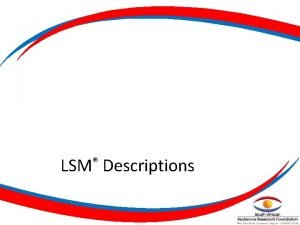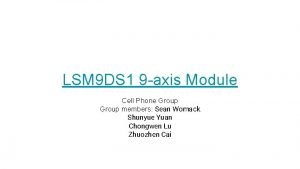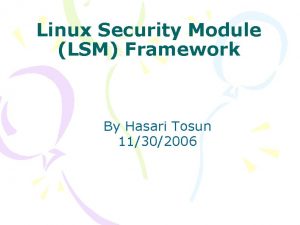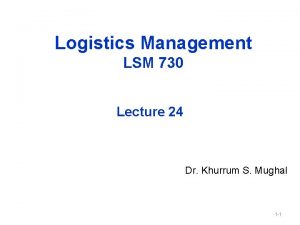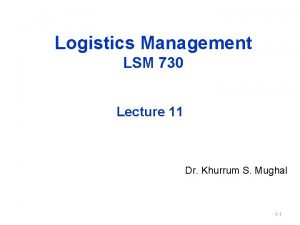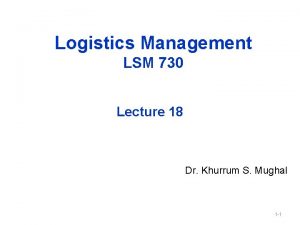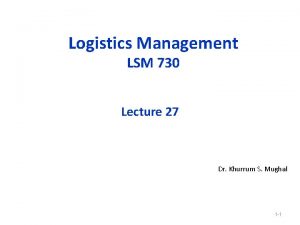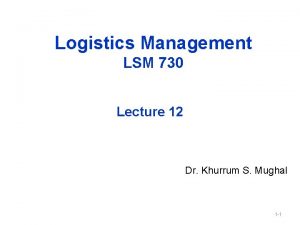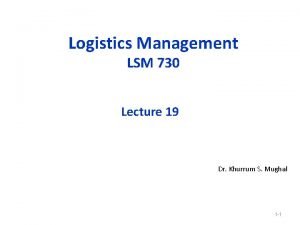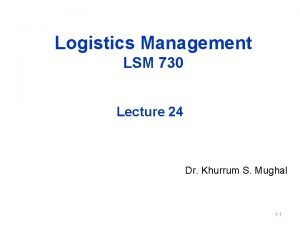Logistics Management LSM 730 Lecture 21 Dr Khurrum










- Slides: 10

Logistics Management LSM 730 Lecture 21 Dr. Khurrum S. Mughal 1 -1

What’s Forecasted in the Supply Chain? • Spatial Vs Temporal Demand • Lumpy Vs Regular Demand • Derived Vs. Independent Demand CR (2004) Prentice Hall, Inc. 8 -2

Some Forecasting Method Choices • Qualitative üSurveys üExpert systems or rule-based • Historical projection üExponential smoothing • Causal or associative üRegression analysis • Collaborative CR (2004) Prentice Hall, Inc. 8 -3

Demand Behavior • Trend – a gradual, long-term up or down movement of demand • Random variations – movements in demand that do not follow a pattern • Cycle – an up-and-down repetitive movement in demand • Seasonal pattern – an up-and-down repetitive movement in demand occurring periodically Copyright 2011 John Wiley & Sons, Inc. 12 -4

Typical Time Series Patterns: Random CR (2004) Prentice Hall, Inc. 8 -5

Typical Time Series Patterns: Random with Trend 250 Sales 200 150 100 Actual sales Average sales 50 0 0 5 10 15 20 25 Time CR (2004) Prentice Hall, Inc. 8 -6

Typical Time Series Patterns: Random with Trend & Seasonal CR (2004) Prentice Hall, Inc. 8 -7

Sales Typical Time Series Patterns: Lumpy Time CR (2004) Prentice Hall, Inc. 8 -8

Forecasting Process 1. Identify the purpose of forecast 2. Collect historical data 3. Plot data and identify patterns 6. Check forecast accuracy with one or more measures 5. Develop/compute forecast for period of historical data 4. Select a forecast model that seems appropriate for data 7. Is accuracy of forecast acceptable? No 8 b. Select new forecast model or adjust parameters of existing model Yes 8 a. Forecast over planning horizon 9. Adjust forecast based on additional qualitative information and insight 10. Monitor results and measure forecast accuracy 12 -9

Qualitative Methods • Management, marketing, purchasing, and engineering are sources for internal qualitative forecasts • Delphi method – involves soliciting forecasts about technological advances from experts 12 -10






